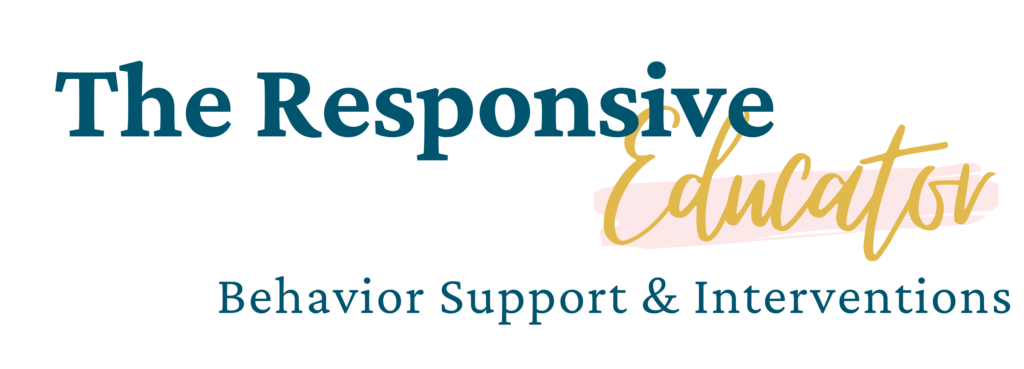
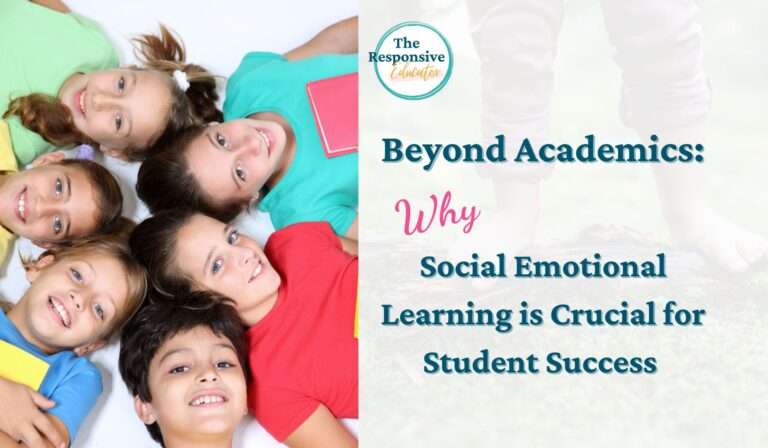
Social-emotional learning (SEL) has become a buzzword in education circles, but some still wonder, what exactly does social emotional-learning mean? At its core, SEL is about helping students develop the skills and competencies they need to navigate life successfully, both inside and outside of school.
However, post-pandemic, when many students may have missed significant amounts of school and schools are seeing significant behavioral concerns in addition to academic deficits, SEL instruction is particularly important.
Throughout this article, we will explore what social-emotional learning is and isn’t, delve into the CASEL 5 competencies, and examine some of the benefits of including social-emotional learning in your teaching day.
Also, be sure to read to the end to learn about the FREE Resources available to support your teaching efforts, including book companion activities that address SEL and ELA skills.
Note: I am an Amazon Affiliate. If you purchase products through the links provided, I will earn a small commission at no extra cost to you, which helps support the blog.
Social-emotional learning (SEL) is the process through which individuals develop the skills and knowledge needed to manage their emotions, build relationships, and make responsible decisions. Teaching students SEL competencies involves helping them recognize and manage their feelings, understand and empathize with others, communicate effectively, set and achieve goals, and make responsible decisions.
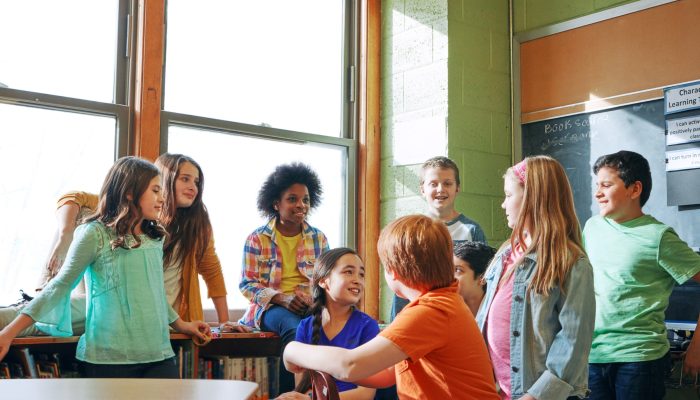
A key aspect of SEL is the development of social skills, such as teamwork, communication, and conflict resolution, which enable individuals to navigate social situations successfully and form positive relationships. Overall, SEL aims to promote social and emotional competence and equip individuals with the skills they need to thrive in school, work, and life.
As teachers and parents, it’s essential to understand the importance of social-emotional development and prioritize it in our teaching and parenting. By reading this post to the end, you’ll gain a better understanding of how SEL can benefit students and discover some free resources to support you in addressing SEL and ELA skills simultaneously in your classroom.
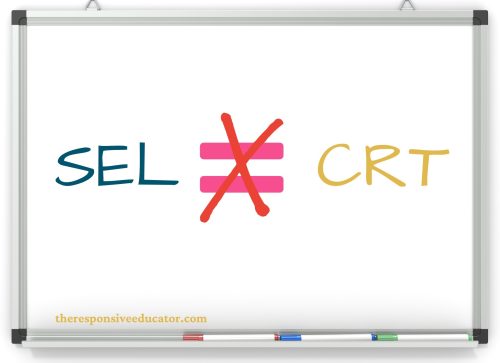
Social-emotional learning (SEL) and critical race theory (CRT) are two distinct concepts that are often confused with each other.
Social-emotional learning refers to the process of developing social and emotional skills in students, such as self-awareness, empathy, and responsible decision-making. Instruction focuses on helping students build positive relationships, manage their emotions, and make responsible choices. SEL is not a political ideology or a specific set of beliefs about race, ethnicity, or social justice.
Critical Race Theory is a theory that looks at how race has affected the development of laws, rules, and social organizations in America. It believes that racism is not only a problem with individuals, but also with the way society is organized. CRT studies how race interacts with forms of inequality and power dynamics, and aims to create more equitable and just systems for all people.
Once again, it’s important to note that social-emotional learning programs do not teach critical race theory, nor do they promote a particular political agenda. Rather, SEL is focused on providing students with the tools and skills they need to succeed both academically and in life.
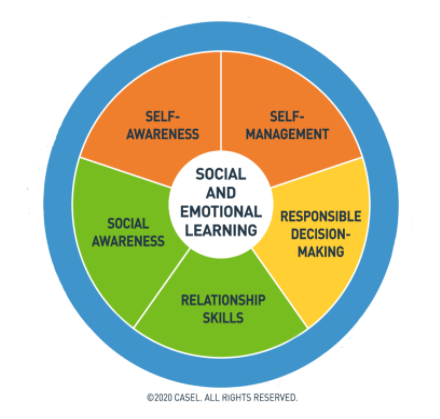
The Collaborative for Academic, Social, and Emotional Learning (CASEL) was founded by a group of researchers and educators who recognized that academic success is not the only determinant of a student’s future success. They also believed that social-emotional skills are crucial for students to navigate and thrive in school, relationships, and life beyond the classroom.
To achieve this, the group developed the CASEL 5 Framework, which outlines the five key competencies of social-emotional learning: self-awareness, self-management, social awareness, relationship skills, and responsible decision-making. These competencies are grounded in research and provide a set of standards for measuring the quality of instruction in social and emotional learning.
To develop self-awareness, students need opportunities to reflect on their emotions, thoughts, and behavior. Teachers can provide SEL instruction that helps students better understand their own strengths, challenges, and learning processes, as well as helping them build a positive self-image.
Teaching self-management skills helps students regulate their emotions and behavior. To develop these skills, teachers can provide SEL instruction with stress and frustration coping strategies, goal-setting, and responsible decision-making.
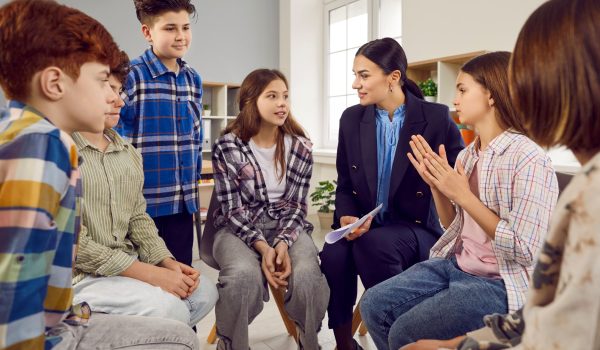
Students also need support in developing social awareness. SEL instruction that teaches students to recognize and understand the emotions and perspectives of others provides opportunities for students to practice empathy, respect, and appreciation for diversity.
Relationship skills are also one of the key competencies identified in the CASEL 5. Teachers can support students through SEL instruction that helps them learn how to communicate effectively, resolve conflicts, and establish positive relationships, and provides opportunities for students to practice these skills in group activities and discussions.
The fifth skill of the CASEL 5 tells us that students need to develop responsible decision-making skills by teaching. They need to be taught how to analyze situations, consider the consequences of their actions, and make informed and ethical decisions. Teachers can support students in this area by providing instruction and opportunities for students to practice these skills by engaging them in real-world problem-solving and decision-making activities.
To learn more about the CASEL 5 Competencies, please visit their website here.

The importance of social skills goes far beyond the classroom and into the job market as students become adults.
Employers highly value soft skills like communication, teamwork, problem-solving, and adaptability. Job seekers who have honed these skills are more likely to stand out from the competition, no matter what industry they pursue.
The need for social-emotional learning (SEL) instruction in schools is more critical than ever, especially in the wake of the pandemic, where many students missed significant amounts of school and schools are seeing increased behavioral concerns alongside academic deficits.
SEL instruction is essential for helping students develop the skills to regulate their emotions, manage stress, and cope with challenging situations effectively. It also addresses the growing concerns of teachers leaving the profession due to difficult student behavior.
By incorporating SEL into the school day, teachers can guide students in developing self-awareness, self-management, social awareness, relationship-building, and responsible decision-making skills. For example, self-awareness and self-management can lead to fewer disruptive outbursts in the classroom, while social awareness and relationship-building skills can create a more positive classroom climate and improve teacher-student relationships.
Focusing on SEL instruction helps create a supportive and inclusive environment where all students feel valued and supported, reducing the likelihood of challenging behaviors. Additionally, it benefits teachers by providing strategies to manage these behaviors and foster a positive classroom atmosphere. By equipping teachers with the necessary tools and resources, schools can improve teacher retention rates and cultivate a more positive and productive learning environment for everyone.
To better understand the benefits of social-emotional learning (SEL) for students, consider the following specific advantages.
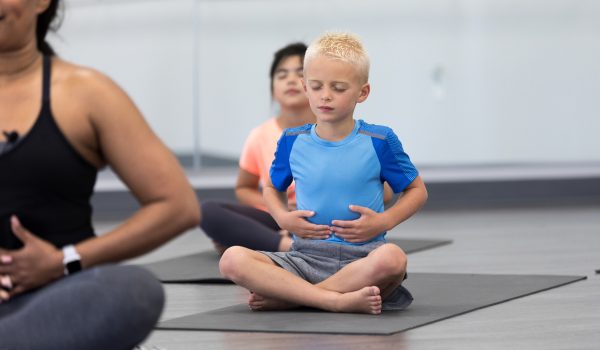
One important benefit to social-emotional learning (which can include yoga and mindfulness) is the way it can help students learn to manage their emotions and handle stress. When students are able to regulate their emotions and handle tough situations, they’re less likely to develop mental health problems like anxiety or depression. (You can read more about the current research on the benefits of yoga and mindfulness for children here.)
Social-emotional learning can also help students to become more confident in their abilities, as well as develop a more positive overall outlook on school and life in general.
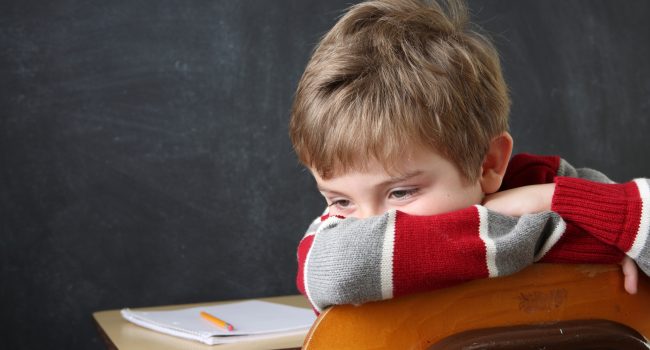
As an elementary school teacher who has been trained in social-emotional learning techniques, Mrs. Chen is always on the lookout for ways to support her students’ emotional well-being. One day, she notices that one of her students, Jack, is struggling to focus in class and is frequently getting into arguments with classmates. Concerned, Mrs. Chen decides to reach out to the student and offer her support.
Through her training in SEL techniques, Mrs. Chen knows that building a strong, positive relationship with Jack is the first step in helping him to manage his emotions and feel more secure in class. She takes the time to listen to his concerns. She discovers that he is feeling overwhelmed by the stress of school and is struggling to cope with his emotions.
Using her training in social-emotional learning, Mrs. Chen provides Jack with the tools and strategies he needs to regulate his emotions and manage his stress. She teaches him how to identify and label his feelings, practice mindfulness and deep breathing techniques, and develop coping strategies to deal with difficult emotions. As a result, Jack begins to feel more secure and engaged in class, and his behavior improves significantly.
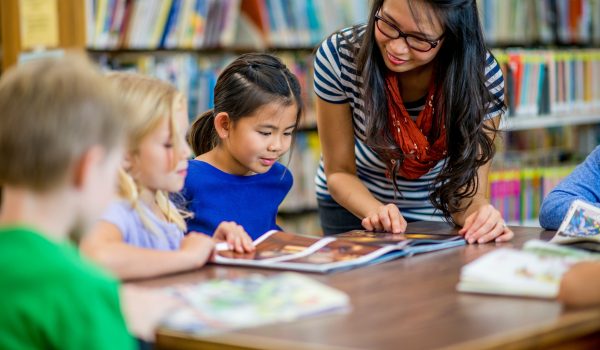
In addition to providing individual support to the student, Mrs. Chen also uses SEL techniques to create a more supportive and encouraging classroom environment for all students. She encourages her students to communicate openly and respectfully with one another and teaches them conflict-resolution skills that allow them to resolve conflicts in a positive way.
Overall, Mrs. Chen’s use of social-emotional learning techniques has a positive impact not only on the individual student but on the entire classroom environment. By providing support and teaching her students how to regulate their emotions and resolve conflicts in a positive way, Mrs. Chen is creating a classroom culture that is inclusive, supportive, and conducive to learning.
In addition to the benefits of improved mental health, social-emotional learning can also have a positive impact on students’ ability to get along with others. Through SEL, students can learn how to effectively communicate, cooperate with others, and resolve conflicts. This helps them to develop and maintain positive relationships with their peers, teachers, and other adults.
Improved social skills contribute can also have a significant impact on students’ attitudes toward school. When students feel confident in their ability to communicate and work effectively with others, they are more likely to be engaged in their learning and feel a sense of belonging within their school community.
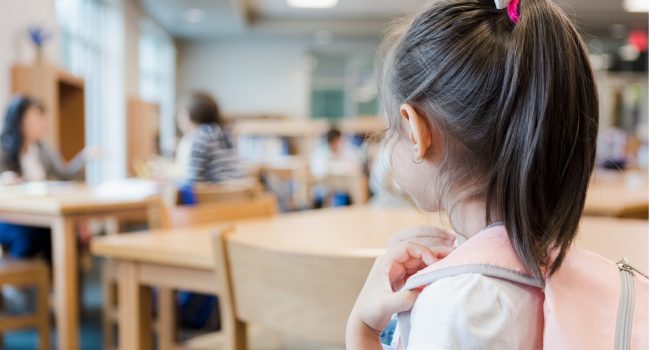
Mrs. Johnson understands the importance of social and emotional learning for her students. In one of her recent class projects, she assigns a group task to her students. One of the students in the group, Erin, is shy and has difficulty communicating with others. Mrs. Johnson sees this as an opportunity to incorporate SEL techniques in her teaching methods.
Using her training in SEL techniques, Mrs. Johnson begins working with Erin to help her develop communication skills and work collaboratively with her groupmates. She starts by taking the time to get to know Erin, learning about her interests and what motivates her. Mrs. Johnson then uses this information to create opportunities for the student to practice their communication skills and build confidence in themselves.
As a result of Mrs. Johnson’s efforts, the shy student begins to feel more comfortable communicating with others and becomes more confident in her abilities.
Erin starts to actively participate in group discussions, sharing her ideas and listening to her classmates’ feedback. This not only helps her to successfully complete the project, but also allows her to develop positive relationships with their classmates.
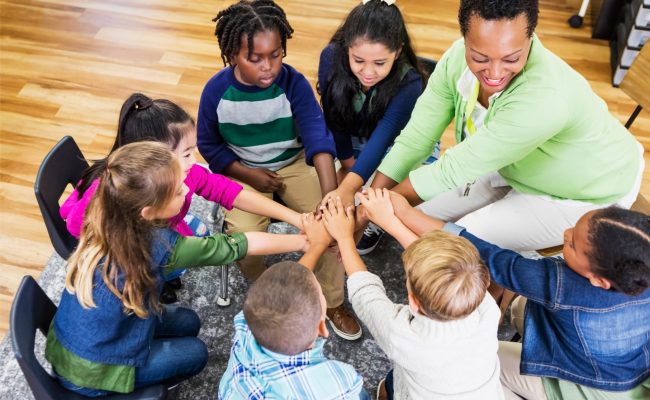
In addition to enhancing “soft skills” that help students learn to get along with others, studies have shown that providing students with social-emotional learning can actually improve their academic achievement by an average of 11 percentile points! This means that by learning social and emotional skills, students can improve their grades and overall academic success.
By promoting engagement, motivation, and concentration, SEL helps students learn more effectively. Additionally, when students feel connected to their school and classroom, and when they feel like they’re part of a positive and supportive learning community, they’re more likely to be motivated to learn and to focus on their studies.
Moreover, by developing emotional regulation and stress management skills through SEL, students are better equipped to handle the challenges and pressures of academic life. They can manage their time better, work more efficiently, and handle stress and setbacks in a healthy way.
As part of her social-emotional learning instruction, Mrs. Blake places a strong emphasis on teaching her students how to set goals and manage their time effectively. By helping students develop these important skills, Mrs. Blake is not only equipping them with the tools they need to succeed academically, but also setting them up for success in their personal and professional lives.

Mrs. Blake begins by teaching her students how to set SMART (Specific, Measurable, Achievable, Relevant, and Time-bound) goals. She emphasizes the importance of creating goals that are specific, measurable, and achievable, while also being relevant to the student’s overall objectives and having a clear timeline for completion.
Mrs. Blake also teaches her students how to break down larger goals into smaller, more manageable steps, making it easier for them to make progress and stay motivated.
Additionally, Mrs. Blake provides her students with strategies for managing their time effectively. She encourages her students to use tools like calendars and to-do lists to keep track of their assignments, deadlines, and other obligations. She also teaches her students how to prioritize their tasks and make efficient use of their time. By helping her students develop these important time-management skills, Mrs. Blake is able to support them in achieving their academic goals and staying on track throughout the school year.
As a result of Mrs. Blake’s social-emotional learning instruction, her students become more engaged and motivated in their studies. They are better equipped to set and achieve their goals, manage their time effectively, and overcome challenges that may arise along the way. This leads to improved grades and overall academic success, as well as increased confidence and a more positive outlook on their own abilities. Ultimately, the SEL techniques incorporated into Mrs. Blake’s teaching methods are helping her students to develop the skills they need to thrive both in and out of the classroom.

One of the greatest advantages of social-emotional learning is that it can help students become more caring, kind, and understanding towards their peers. By participating in SEL programs, students learn how to recognize and respond to the emotional needs of others. This helps to create more inclusive and supportive social environments in schools.
When students learn to communicate better and express their emotions effectively, they also learn to understand the feelings of others. This helps them build meaningful and productive relationships, and be more kind and empathetic towards others. By developing empathy, kindness, understanding, and sharing through SEL programs, schools can create a more caring and supportive community, where everyone feels welcomed and valued.
As an example, let’s say Mr. Peterson’s class has been participating in a social-emotional learning program. One of his students, Sarah, has been actively engaged in the program and has learned how to recognize and respond to the emotional needs of others.
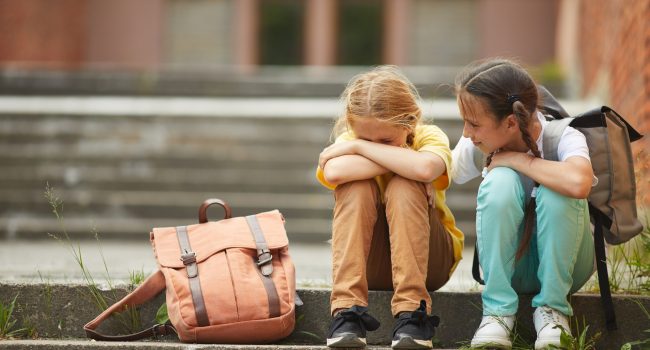
One day, Sarah notices that her classmate, Lily, seems to be struggling. Lily has been quiet and withdrawn lately, and Sarah is worried about her. Thanks to the SEL education she has received, Sarah has the skills to identify Lily’s emotional state and respond in a supportive way.
Sarah reaches out to Lily and asks if she’s okay. She offers reassurance and encouragement, letting her know that she’s there for her if she needs someone to talk to. She also invites her to join a group activity during recess, hoping to create a more welcoming and supportive social atmosphere.
Thanks to her SEL education, Sarah was able to identify and address Lily’s emotional needs. Her actions demonstrate empathy, kindness, and understanding, all of which help to create a more positive and inclusive social environment in Mr. Peterson’s classroom. Sarah’s actions have the potential to make Lily feel more supported and encouraged, contributing to her overall well-being and academic success.
When students face tough decisions, it’s not always easy for them to know what to do. Sometimes they feel pressured to do what’s popular or expected, even if it doesn’t feel right. Other times they might not fully understand the potential consequences of their choices. This can lead to them making decisions that they later regret.
Social-emotional learning, however, can help students become better decision-makers. Students learn to recognize their own values and priorities, and to reflect on those things when they have to make a hard choice. This helps them to consider not only what feels good or easy in the moment, but also think about the long-term consequences of their actions. This can help to prevent risky or harmful behavior.

Social-emotional learning can also have a positive impact on students’ decision-making skills when it comes to making choices that involve others. Through SEL, students learn to consider the perspectives, needs, and feelings of others. This can help them make more informed and compassionate decisions.
By developing empathy and learning to see things from different points of view, students can better understand how their decisions may affect others and make choices that prioritize the well-being of all of the people involved. This can lead to more positive outcomes in relationships, teamwork, and other social interactions, and can help students develop a stronger sense of responsibility and accountability for their actions.
Mrs. Cole has assigned her students the task of planning a meal on a budget. In addition to improving their cooking and budgeting skills, Mrs. Cole also emphasizes the importance of decision-making skills. She encourages her students to consider each other’s perspectives and priorities, collaborate to combine their strengths and experiences, and communicate effectively to prevent misunderstandings and conflicts.
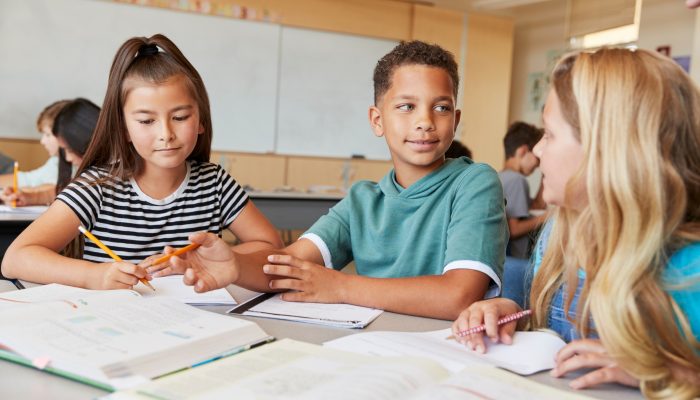
By using decision-making skills, the students are better equipped to allocate limited resources such as money and ingredients, and make informed choices that take into account everyone’s preferences.
These skills are not only valuable in the context of this assignment but also in future group projects and social situations. The students will learn to work effectively in a team, understand and appreciate diverse perspectives, and communicate effectively, all of which will prepare them for success in their academic and professional endeavors.
The significance of social-emotional learning in schools cannot be overstated, especially post-pandemic. Equipping students with emotional regulation, stress management, and problem-solving skills enables schools to foster a supportive, inclusive environment where every student feels valued.
Furthermore, effective SEL instruction addresses some vital concerns of teachers leaving due to student behavior by equipping them with tools for behavior management and positive classroom creation. This may encourage teacher retention, enhancing the overall learning atmosphere.
It’s important to recognize that social-emotional learning isn’t merely an optional curriculum supplement – it’s a fundamental element for both student and teacher success.
Are you a busy teacher who wants the benefits of interactive read-alouds but wishes there was a way to save time without sacrificing quality? Look no further!
Check out my interactive read-alouds and book companions in my TPT store here! Each product is designed to make your life easier by providing not only discussion questions for before, during, and after reading, but also a wealth of extension activities that cover both SEL and ELA standards.
Say goodbye to the hassle of searching for additional resources and hello to seamlessly integrated instruction that your students will love!